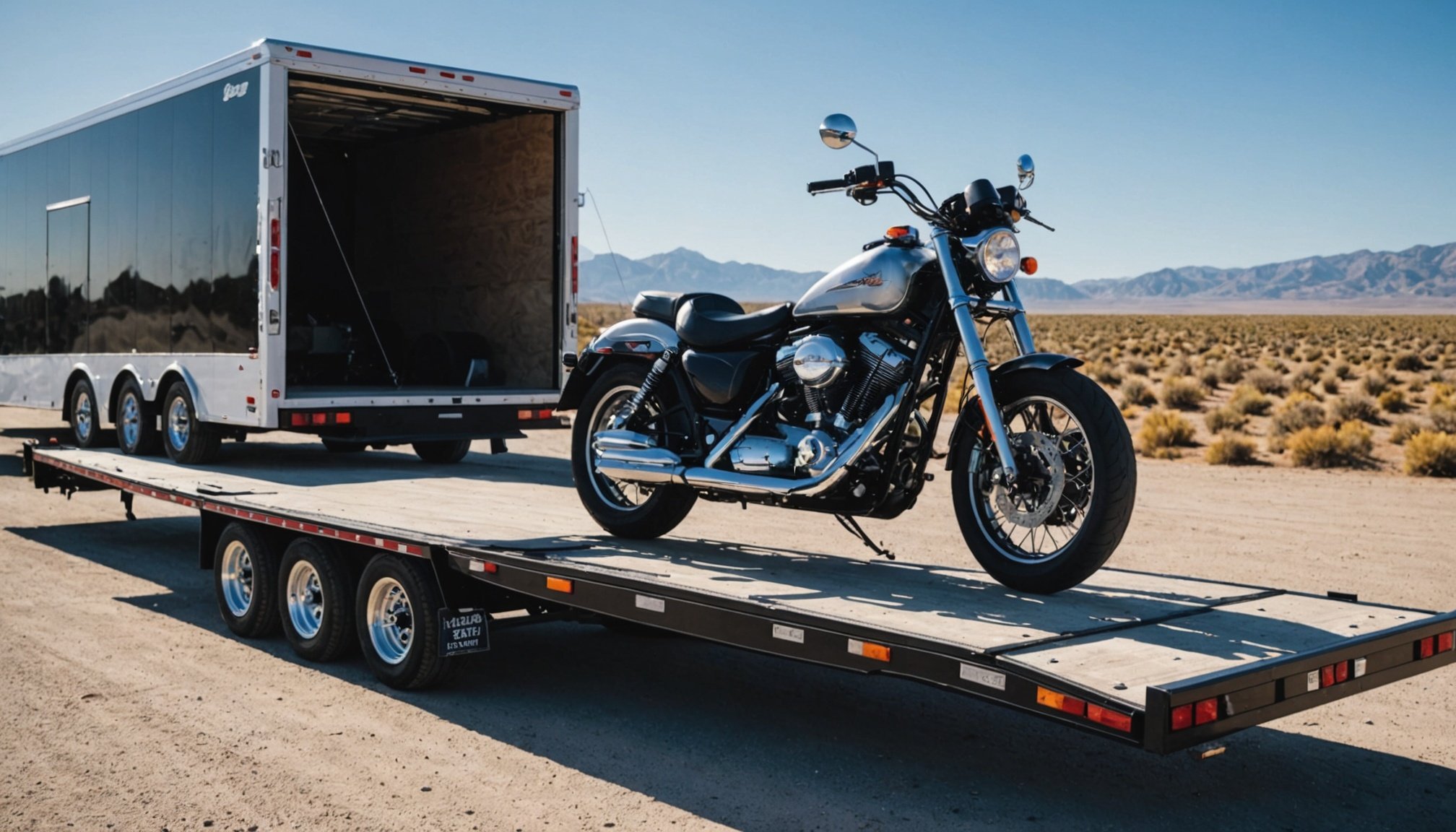Your motorcycle is more than just a vehicle; it’s an extension of your freedom, a companion for adventure, or perhaps even a prized collection. Whether you’re relocating, heading to a distant rally, or shipping it for a picturesque road trip, ensuring its safe transport is vital. As motorcycle enthusiasts, you understand how critical it is to protect your bike from potential damage during transit. Using a trailer is a popular and secure way to transport motorcycles, yet it requires meticulous attention to detail. This article will guide you on safely securing your motorcycle on a trailer, using motorcycle straps, wheel chocks, enclosed trailers, and other essential tools to ensure a smooth journey.
Choosing the Right Trailer for Your Motorcycle
Selecting the appropriate trailer sets the foundation for safe transport. With various options available, you need to consider your motorcycle’s size, weight, and the distance it will travel. There are two main types of trailers: open and enclosed.
Additional reading : How can you protect your motorcycle from theft while parked in public places?
Open Trailers
Open trailers offer flexibility and are often more affordable. However, they expose your motorcycle to the elements, making them suitable for shorter distances or fair-weather travels. If you choose this option, ensure the trailer is specifically designed for motorcycles, equipped with wheel chocks and tie points.
Enclosed Trailers
Enclosed trailers provide additional protection against weather, theft, and debris. Though costlier, they are an excellent choice for long-distance travels. When choosing an enclosed trailer, consider the height clearance, ensuring it accommodates your motorcycle comfortably.
Also read : What are the advantages of riding electric motorcycles in urban environments?
Size and Capacity
The trailer’s size should correlate with your motorcycle’s dimensions and weight. Overloading can lead to accidents or damage. Always check the trailer’s maximum weight capacity and ensure it can handle your bike’s weight along with any other accessories or gear you might include in the transport.
Essential Tools for Securing Your Motorcycle
Once you’ve chosen the right trailer, the next step is gathering the necessary tools to secure your motorcycle during transport. Proper equipment is crucial to prevent any shifts or damage during transit.
Motorcycle Straps
Invest in high-quality motorcycle straps, as they provide the primary means of securing your motorcycle. Opt for ratchet or cam buckle straps that are designed to withstand the bike’s weight and the forces of transport. Make sure they have a high load rating and are from a reputable brand.
Wheel Chocks
Wheel chocks are indispensable for stabilizing your motorcycle’s front wheel. They prevent any forward or backward movement, acting as an anchor to keep the bike firm in place. Ensure the chock is compatible with your bike’s tire size and fits securely on the trailer.
Tie-Down Points
Utilize designated tie-down points on the trailer. These are reinforced spots designed to handle the stress of transported loads. Distribute the straps evenly on both sides of the bike to maintain balance and prevent tipping.
Check Before Departure
Before setting off, double-check all connections. Test the tension of the straps, ensuring they are taut but not over-tightened, as excess pressure might damage your motorcycle’s suspension.
Step-by-Step Guide to Loading Your Motorcycle
Loading your motorcycle onto the trailer is a task that requires preparation and precision. Follow these steps to ensure a smooth and safe loading process:
Positioning the Trailer
Park the trailer on a flat, stable surface. Secure it using the trailer’s chock or parking brake. This prevents any unwanted movement during loading.
Preparing the Motorcycle
Before loading, remove any accessories or loose items from your motorcycle. This reduces weight and prevents loss or damage. Check tire pressure and ensure the bike is in good condition for transport.
Loading the Motorcycle
Use a ramp specifically designed for motorcycles to load your bike onto the trailer. It’s wise to have a friend assist, guiding the bike up the ramp while maintaining stability.
Securing with Straps
Once the motorcycle is in position, it’s time to secure it. Attach the front straps first, looping them through the handlebars or triple tree. Follow with the rear straps, ensuring they connect to a solid part of the bike, like the frame. Adjust the tension to prevent shifting.
Final Check
With the motorcycle strapped down, perform a final inspection. Tug the bike slightly to test the stability. If it shifts, readjust the straps and ensure the wheel chock is firmly in place.
Ensuring Safety During Transport
Transporting your motorcycle securely doesn’t end once it’s loaded onto the trailer. Maintaining vigilance during the journey is key to ensuring your bike’s safe arrival.
Regular Checks
During long trips, make it a habit to stop periodically and inspect the straps and wheel chock. Temperature changes and road conditions can affect tension, so adjust as necessary.
Driving with Caution
Drive with awareness and patience. Avoid sudden stops, sharp turns, and high speeds, all of which could cause the trailer to sway or your motorcycle to shift. Familiarize yourself with the trailer’s braking and handling capabilities.
Insurance and Documentation
Before you hit the road, check that your motorcycle insurance covers transport events. Having proper documentation can mitigate any unforeseen issues and provide peace of mind.
Arrival and Unloading
Upon reaching your destination, park on a stable surface before unloading. Reverse the loading process safely, ensuring you’re prepared to handle the bike’s weight as it’s removed from the trailer.
Through attentive preparation and consistent checks, you can transport your motorcycle with confidence, knowing it will arrive unscathed and ready for your next adventure.
Transporting your motorcycle on a trailer requires diligence, the right equipment, and a plan. By choosing a suitable trailer, using quality straps, and implementing secure loading practices, you mitigate the risks of transit. Regular checks during your journey ensure the continuity of safety and security. Whether you’re shipping your bike for an event or relocating, these steps provide a thorough guide for enthusiasts who cherish their motorcycles. Safe travels, and may your journeys be as enjoyable as the destinations themselves.











